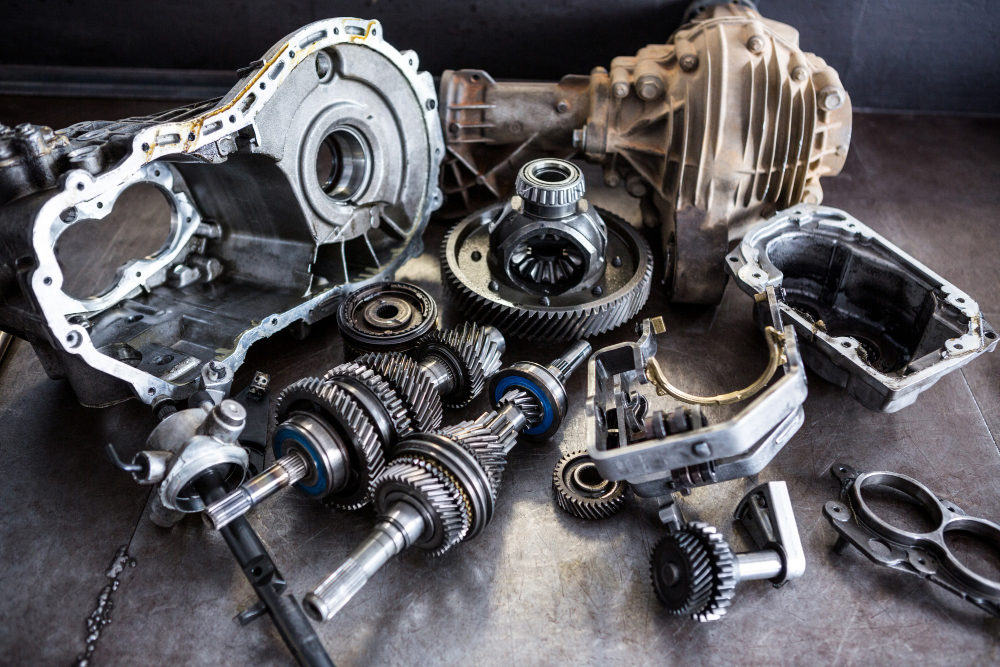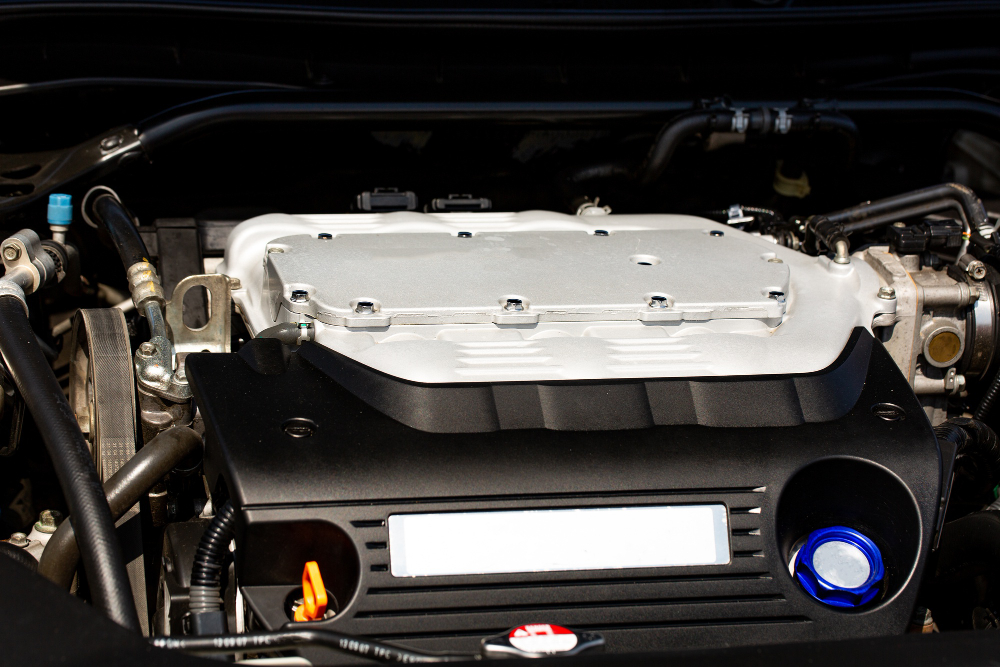Table of Contents
If ever you were asked about some details of your car, the words “make” and “model” might also strike a familiar bell. When choosing which car to buy, looking for replacement car parts, or even insuring a car, it is better to know the make and model of a vehicle. But what does it imply to be representational, in what way is it infrastructural, and what do these terms mean?
In this blog, you’ll first learn what the make of a car is, secondly, distinguish it from the model, and thirdly, get some valuable tips on how to find them. This blog will undoubtedly give you a more comprehensive understanding of the importance of vehicle branding.
What Is the Make of a Car?
The term “make of the car” refers to the brand or marque of a vehicle, which is typically the manufacturer itself. In simple terms, it tells who the manufacturer of the car is. For example:
- Some manufacturers’ names are Toyota, for example; others are models, such as the Corolla and Camry.
- Ford is an automobile company that produces cars such as the Mustang and the F-150 pickup.
Understanding the Significance of the Make of a Car
The manufacturer of a vehicle denotes the brand, historical performance, and quality of the car model now in production. Every carmaker has a different design concept, technology approach, and market strategy. For example:
- Toyota is usually regarded as being reliable and relatively robust.
- BMW is typically the symbol of luxury and performance.
- Ford is synonymous with the rugged truck and the American heritage.
When someone asks, “What is the make of the car?” they expect to know that this company manufactured the vehicle.
Knowing what car you have and thus looking for replacement parts becomes simple as manufacturers build specific parts for their automobiles. This is where Used Auto Parts Pro offers various car makes so one can have proper compatibility and performance.
What Is the Model of a Car?
Although the make refers to the manufacturer of a particular car, the model relates to a specific vehicle manufactured by that firm. Models can be given unique names for a particular size of design or purpose. For instance:
- Ford’s cars include the Explorer, Focus, and Mustang.
- Honda cars are in the make section, and feature models include but are not limited to the Civic, Accord, and CR-V.
- Some of Toyota’s cars are the Camry, Corolla and RAV4.
How Car Models Work
Car models are usually categorized depending on their use or characteristics as follows:
Sedans can be cars like the Toyota Corolla or Honda Accord.
SUVs: These are types of vehicles, such as the Ford Explorer or Toyota RAV4.
Trucks: These models include the Ford F-150 or Chevrolet Silverado.
Sports Cars: Such as Mazda MX-5
Each model could also feature several trim levels with specific features or modifications that set them apart. For instance,
- A Toyota Camry can be an LE, SE, or XLE edition.
- A Ford F-150 can be had in the XL, XLT, or Platinum series.
Why Models Matter
Your car manufacturer determines what parts, accessories, and services suit your automobile type. For example, if you wish to order a part for a Honda Civic, you must be very specific about your car’s model year and trim.
At Used Auto Parts Pro, we have an easy-to-browse database so you can quickly find the correct spare for your automobile’s make.
Make vs. Model: Key Differences Explained
In a car, for instance, “make” and “model” are two related terms that refer to different facts. Knowledge of such differentiation is essential to searching for a car, buying a spare or a component, or mentioning parameters. Let’s explain this concept by categorizing a vehicle’s make and model into two distinctive elements.
Aspect | Make | Model |
Definition | Refers to the manufacturer or brand | Refers to the specific vehicle produced by the make. |
Example | Ford, Toyota, Honda | Mustang, Camry, Civic |
Purpose | Identifies the company behind the vehicle | Specifies the type, size, and design of the car |
Importance | Needed for general identification | Required to identify compatibility and specifications |
Practical Example: Make vs. Model
To elaborate, let’s say, ‘What car do you drive?’ If you reply, ‘Ford,’ you are also confirming the make of the car you possess. However, your identification would be excellent if you explained about the Ford Mustang and gave me the make and model.
Why Understanding Make and Model Matters for Car Owners
Understanding your car’s make and model is more than just trivia—it’s vital for various practical purposes:
Buying Replacement Parts:
Car parts should be unique to your car model. That way, the correct parts for your car are ordered from the dealership due to increased knowledge of the make and model’s specifications.
For example:
A Ford F-150 driver requires spare parts for an F-150 model vehicle in case of breakdown.
If you own a car, you will have parts unique to the vehicle.
Our company, Used Auto Parts Pro, has all major auto parts makes and models, allowing clients to avoid mistakes when purchasing used car parts.
Car Insurance:
Your insurance premium depends on the car’s manufacturer, model, and trim. For example, insurance on a muscle cars like a Ford Mustang, will be more expensive than insurance on a standard vehicle.
Resale Value:
The salvage value of a car depends on its make and model. Some makes and models have better market value because of their reliability, popularity, or performance. The make and model of a vehicle define its market value when purchasing or selling it.
Maintenance Needs:
The requirements for maintaining the models may also vary from one model to the other. For example, the brake pads of the Toyota Corolla are less similar to those of the Toyota Camry.
Understanding Vehicle Features
As explained above, aspects like the manufacturer and model define your car’s capacities, engine size, fuel consumption, and possible additional options, such as safety features. This information assists you in making the appropriate decisions about maintenance and further upgrading.
Knowing the make and model of a vehicle is necessary when making a purchase decision, whether for acquisition, repairs, or resale.
At Used Auto Parts Pro, we emphasize the importance of knowing your car’s make and model. This information is crucial for acquiring the correct parts for your vehicle, maintaining it, and making appropriate decisions. When one realizes this separation, it becomes easy to do anything, from fixing something to selling it.
Tips for Identifying the Make and Model of Your Car
If you are uncertain about your vehicle, you are not alone—nevertheless, it is easy to find out the make and model of your car. These details are critical to make, say, a purchase of replacement components, decode automobile requirements, or even sell a car. Here are six practical tips to help you identify your car’s make and model:
- Check the Owner’s Manual
An owner’s manual contains details about your car’s make, model, trim, and the kind of engines it was built with. No document is as accurate as an owner’s manual.
- Read the number located on the vehicle dashboard: Vehicle Identification Number or VIN.
VIN stands for a vehicle identification number. It is a 17-digit code containing important information about your car. The VIN is fixed on the dashboard, behind the windscreen, or on the door panel of the driver’s seat. It can also be found on the vehicle registration or insurance. The first few letters may state the make, while the remaining letters may state the model, version, and engine type.
- Examine the Badge or Logo
Like trademarks, logos are usually conspicuously placed in strategic parts of the car, such as the bonnet, the rear part, or even the wheel. Furthermore, the model name is usually written on the part of the car at the back. Emblems and model badges allow the user to quickly identify the manufacturer and the type of car at first glance.
- Examining Your Registration Papers
If you own a car, its information is almost always found on your vehicle registration paperwork or insurance card. Both documents are easily accessible and helpful for checking the details of your car if you cannot do so otherwise.
- Use Internet Tools
Many sources are available online and in the market to quickly provide more details about your car. You can get information about your vehicle—make, model, trim, and engine—based on its VIN or license number. Many websites and applications help by directly retrieving the data from the database.
- Inspect the Interior
Clues regarding the specific model and trim level of the interior infotainment systems can also be obtained; for instance, these can be classified into subcategories based on model and trim, allowing for specificity.
By following these tips, you’ll always be able to distinguish the make and model of the car you take for a ride. At Used Auto Parts Pro, we recommend that car owners be willing to know these aspects, expecting that it will make it even easier for them to look for appropriate replacements and make the right decisions on their cars.
Conclusion
Knowing your car’s name is not enough; you must also discover the basic facts that help you overhaul, repair, and enjoy your vehicle. Whether you need bolts and nuts, an insurance policy, or just want to satisfy personal curiosity, knowing your car’s manufacturer is very helpful.
This type of vehicle is the term used to describe the various models produced by that manufacturer, such as the Mustang or the Camry.
Finding the right components for your car is easy in Used Auto Parts Pro. Given the make and model, you can shop confidently for reliable, high-quality components that will allow your vehicle to continue running normally.
Let’s get started. Visit Used Auto Parts Pro today, and let us show you how to find essential car parts!
Frequently Asked Questions
Manufacturers formally launch numerous models for various customer types. For instance, small cars like the Toyota Corolla are suitable for city use, while powerfully built sport utility vehicles like the Toyota RAV4 are ideal for families or people undertaking off-road activities.
The model of a car is any specific vehicle under the manufacturer. For example, Toyota has its models, including the Camry, Corolla, and RAV4.
Make refers to the car manufacturer, for instance, a Ford maker, which is quite different from the Ford Mustang and Civic models.
Sometimes, it is essential to establish the make and model of the car in question for various reasons, such as car ownership, maintenance, and repair. It is necessary to know the make and model to buy the appropriate parts; usually, there is a difference with other models when replacing parts. It is also responsible for getting the correct insurance prices since the insurance quotes depend on the car’s brand, age, and repair records. Thirdly, the make and model, in particular, help to follow all the necessary maintenance, as different vehicles require different types of maintenance at various intervals. Lastly, when the time comes to sell the vehicle, it will help guide you on how to price the car depending on its make, model, value, and state. All in all, generalizable knowledge about your car’s make and model will enable you to understand several aspects of automobile ownership to benefit a well-informed car owner.
Your make or model can be identified by consulting the owner’s manual, the badge usually placed on the car, registration or insurance papers, or the VIN.
Indeed, premiums and insurance costs depend on other car models. A power or luxury model of car has higher premiums and insurance costs than standard vehicles.
This is because a variation of a car model is one of the features, as are changes in the car’s appearance, such as the XLT and Platinum models of the Ford F150.
The make and model of a car determine which parts are compatible with it. Knowing both details is essential when shopping at places like Used Auto Parts Pro to get the right parts.
Indeed, the VIN carries provisions on the area’s make, model, automobile, engine, and trim.
Trustworthy online stores like Used Auto Parts Pro allow you to order used auto parts online based on your car’s make and model.





